In 1991 a “no-net-loss” wetland policy was adopted by the Minnesota legislature paving the way for the Minnesota Wetland Conservation Act (WCA). The WCA created a new replacement method where one landowner can choose to restore or create a wetland and sell “credits” from that new wetland to other landowners who need to impact wetlands on their own properties. This process is known as wetland banking.
Prior to this, persons impacting wetlands were often required to replace their impacts by creating their own wetland, known as “project-specific replacement”. This replacement was often located on the same property as the impact and typically resulted in poor quality wetlands rather than diverse natural wetlands they were meant to replace. Because of this limited success in generating quality wetlands and the state mandated monitoring requirements that tied applicants to a given project and property for many years, wetland banking has become the replacement method of choice for government agencies and applicants alike.
What are wetlands?
Wetlands are areas transitional between terrestrial and aquatic systems where the water table is usually at or near the surface or the land is covered by shallow water. Wetlands are identified using the Corps of Engineers 1987 Wetlands Delineation Manual and regional supplements. Generally, a wetland must have wetland plants, soils formed under wet conditions (hydric soils), and evidence of water above or near the surface during the growing season.
I own land that contains a Wetland. Can I get credits?
Generally, only newly restored wetlands that are created under the supervision of the state can generate bank credits. Using existing wetlands as replacement fails to satisfy the no-net-loss policy; therefore, existing wetlands seldom generate bank credits.
How do I identify a wetland or “No cattails, no wetland, right?”
Unfortunately, it’s not that easy. There are several different “types” of wetlands in Minnesota, and not all of them have cattails; in fact most do not. Some wetlands are grassy meadow areas with little or no surface water, trees or shrubs dominate other wetland types, and some wetlands may even be maintained as lawn. If you are wondering if a particular area is a wetland, contact your county’s Soil and Water Conservation District or contact a certified wetland delineator (see those listed to the right for our recommendations) for assistance. A simple question before you start work may prevent significant problems for you and your project.
As you might imagine, prices of wetland credits vary greatly across the state of Minnesota depending upon supply and demand in your impact area. Pricing is quoted either on a per square foot or per acre (43,560 sq. ft.) basis depending upon the size of the transaction. If your impact exists within a watershed or “bank service area” that is in a rural area with many competing wetland bank accounts you could find prices as low as 25 – 35 cents per sq. ft., possibly lower. If your impact is in a watershed or bank service area that is in a metropolitan area with only a few competing banks, prices can exceed $1 to $1.50 per sq. ft. For exact pricing, call us or use our “Quick Quote” button on our “Buy Credits” page for the lowest currently available credit prices for your impact.
Why should I buy credits instead of making my own replacement wetland?
Simple answer, it’s safer, faster, easier, and in most cases cheaper. Landowners proposing to impact wetlands and provide their own replacement need to write a detailed plan outlining how they will either create new wetlands or restore previously drained wetlands. Generally, this replacement must be in the same watershed or county as the impacted wetlands. Because this project-specific replacement is often impractical and landowners proposing the project may have no idea of where or how to create or restore a functioning wetland, purchasing credits from an account holder is a convenient option. The wetland banking system helps connect landowners who have already restored or created wetlands with those who need to replace wetlands they plan to drain or fill. The Wetland Credit Agency recommends that any party attempting to restore wetlands on their own behalf acquire the assistance of an experienced and qualified professional to develop and implement their restoration plan.
If I don’t need all the credits I bought for a project can I save them for another project or resell them?
No. When purchased as part of a replacement plan, application wetland credits must be applied to that specific replacement plan only. All credit sales reported to the state are final and the purchased credits cannot be returned, reused, or reserved for other uses. If a buyer wishes to reserve credits for future use, see the question below.
Can I purchase credits in advance if I know I will need them in the future?
Yes. In order to do this, the credits must be transferred and not purchased as part of a replacement plan. If the credit buyer is not already an account holder, they must be set-up as one by the state.
When I buy credits do I own the property?
No. Credits are separate from the property itself. Wetland credit buyers have no interest in the property on which the credits were generated.
The primary market area for a bank’s wetland credits is the wetland bank service area in which the bank is located. What many account holders don’t realize is it may be possible to sell credits to buyers in other bank service areas, or even statewide in certain situations.
Finding a buyer can be difficult, and many account holders end up waiting years for qualified buyers to find them. This fact as well as the complicated nature of wetland banking transactions, locating qualified buyers or account holders, and the need for for detailed record-keeping is why the Wetland Credit Agency was founded. Contact us if you would like to learn more about our services.
How much should I charge for my credits?
A question we get asked a lot. Although credits are only worth as much as a buyer is willing to pay, as a seller, the last thing you want to do is under value your wetland credit bank. Most account holders use a “follow the leader” approach with no real basis for their pricing strategy.
The Wetland Credit Agency offers an independent pricing audit based on a thorough competitive analysis as well as an intimate understanding of the wetland banking market. This is a free service to our customers, and offered à la carte to non-customers. Contact us if interested.
Can I sell a property which contains a wetland bank?
Yes. The credits established in a wetland bank are not considered “real property” and do not automatically transfer with the title. When selling a wetland bank property where unsold credits remain, you have the option of retaining the wetland credits or transferring them to the new property owner. The perpetual conservation easement remains with the property’s title and, unless otherwise specified in your contract, the new owner is required to maintain the wetland bank in accordance with the easement and approved wetland bank plan.
Are wetland laws just another way for government to tax my business?
At first glance it may seem like this is the case. The Wetland Conservation Act was passed by the state legislature because it was recognized that wetlands are important to our natural and economic environment and protection of these resources was in the public’s interest. Like other situations where the burden of public benefit is born by a few individuals it may appear as though you or your project are being singled-out by government regulators. Those with the task of administering wetland regulations did not write the regulations and are simply carrying out the directive of our representative government. In other words, be kind to the bearers of bad news.
As supporters of environmental responsibility as well as business owners ourselves, the Wetland Credit Agency supports wetland regulation and restoration laws so long as they are written and administered fairly, consistently, and truly result in public benefit. Regulation for the sake of regulating helps nobody, but effective and fair regulation of our natural resources can benefit us all.
What should I do if my records and the state records don’t reconcile?
The best option is to notify BWSR (those in the business call it phonetically “bowser” for short) immediately upon learning of the situation. Gather all your records and be prepared to show documentation of every transaction you have had for a given wetland bank account. Identify the differences between the two records and rectify the situation. If an account holder oversells on a wetland bank account because of poor record keeping or failing to report all transactions they may be required to acquire the oversold credits from someone else at their cost and will incur a transaction fee for modifying wetland credit transactions to reconcile an account. For these reasons it is critical that detailed records of all transactions be maintained, notices of all transactions be immediately sent to BWSR’s bank administrator, and account balances be reconciled with the state annually.
The Wetland Credit Agency handles record-keeping on behalf of our customers. Any account holder who finds themselves with reconciliation issues are encouraged to contact us for assistance.
To better serve our customers, the Wetland Credit Agency has limited our services to representation of account holders, facilitation of credit transactions between sellers and buyers, and credit valuation services. There are numerous qualified wetland professionals who are capable and willing to assist you with your application and monitoring needs. See our links to the right for Wetland Credit Agency recommended wetland consultants.
Wetland Banking Resources
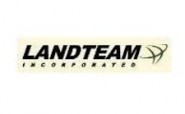
Landteam
Landteam provides professional consulting services in the...Go to site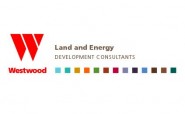
Westwood Environmental
With many experts on staff, Westwood offers...Go to site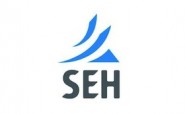
SEH
SEH is a full-service professional services firm...Go to site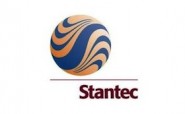
Stantec
Stantec recently merged with Bonestroo who have...Go to site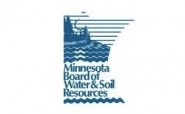
BWSR
Known phonetically as “bowser” in the business,...Go to site
US Army Corps of Engineers
The US Army Corps of Engineers is...Go to site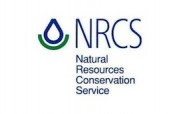
NRCS
NRCS is a division of the US...Go to site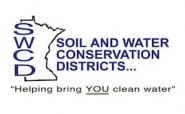
MN Assoc. of Soil & Water Conservation Districts
MASWCD is a nonprofit organization which exists...Go to site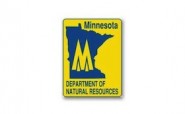
MN Dept. of Natural Resources
DNR mission statement: Our mission is to...Go to site
